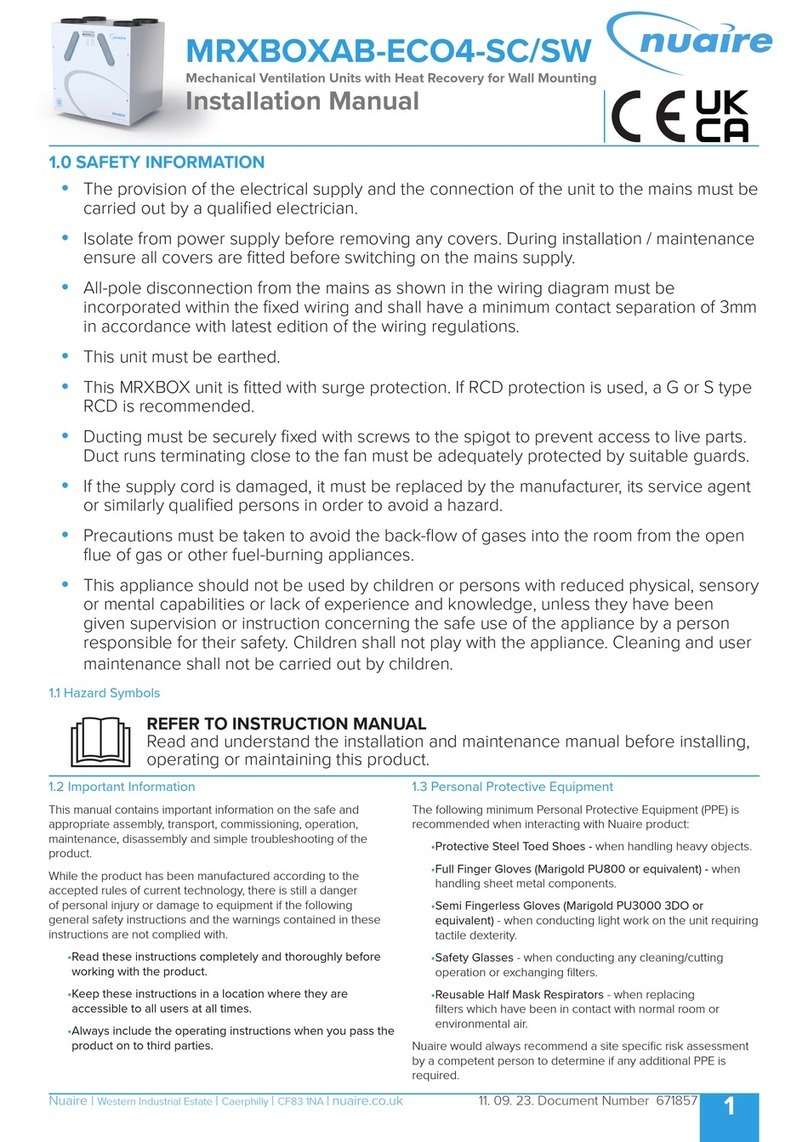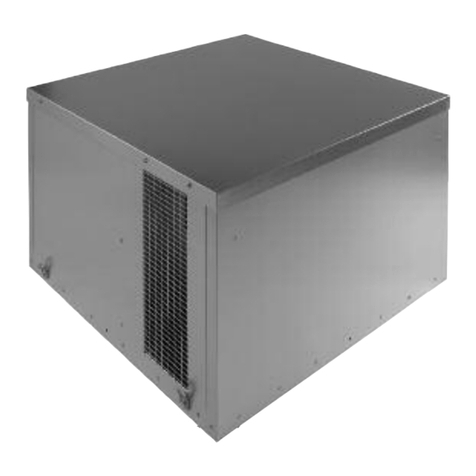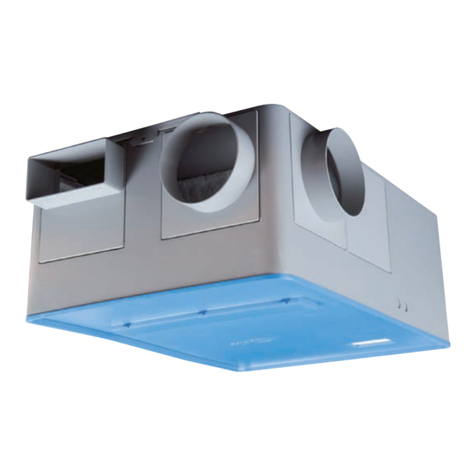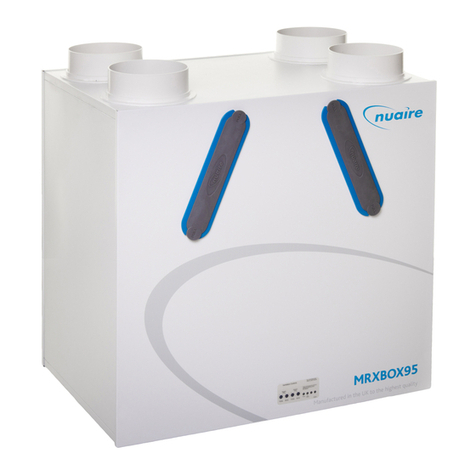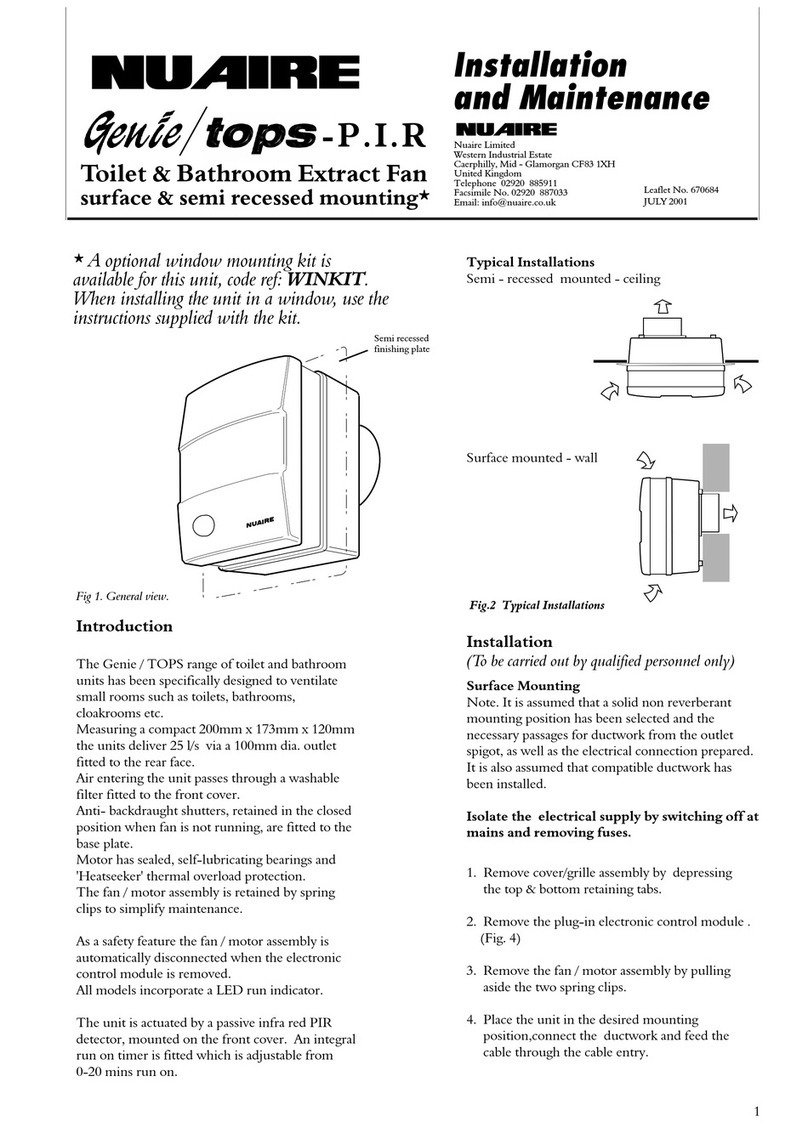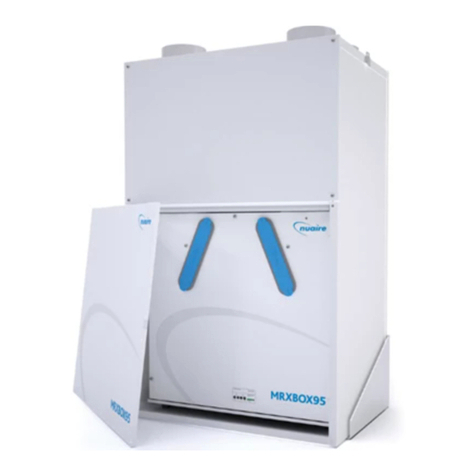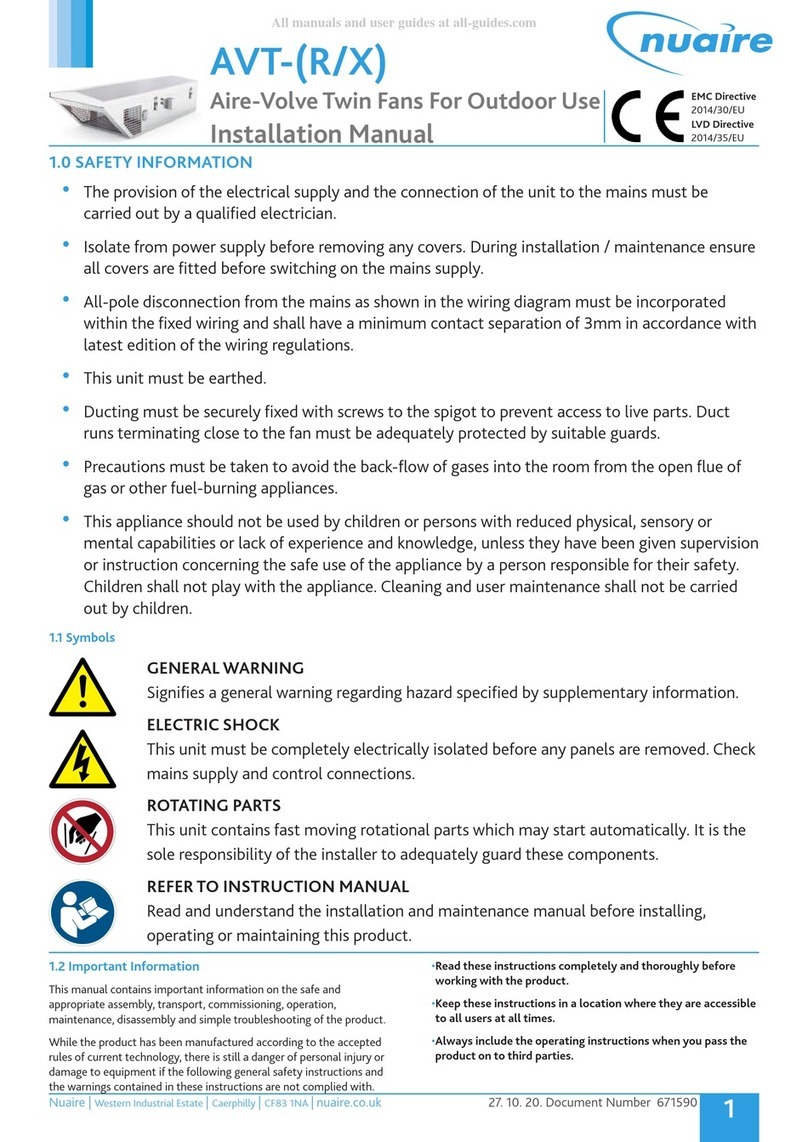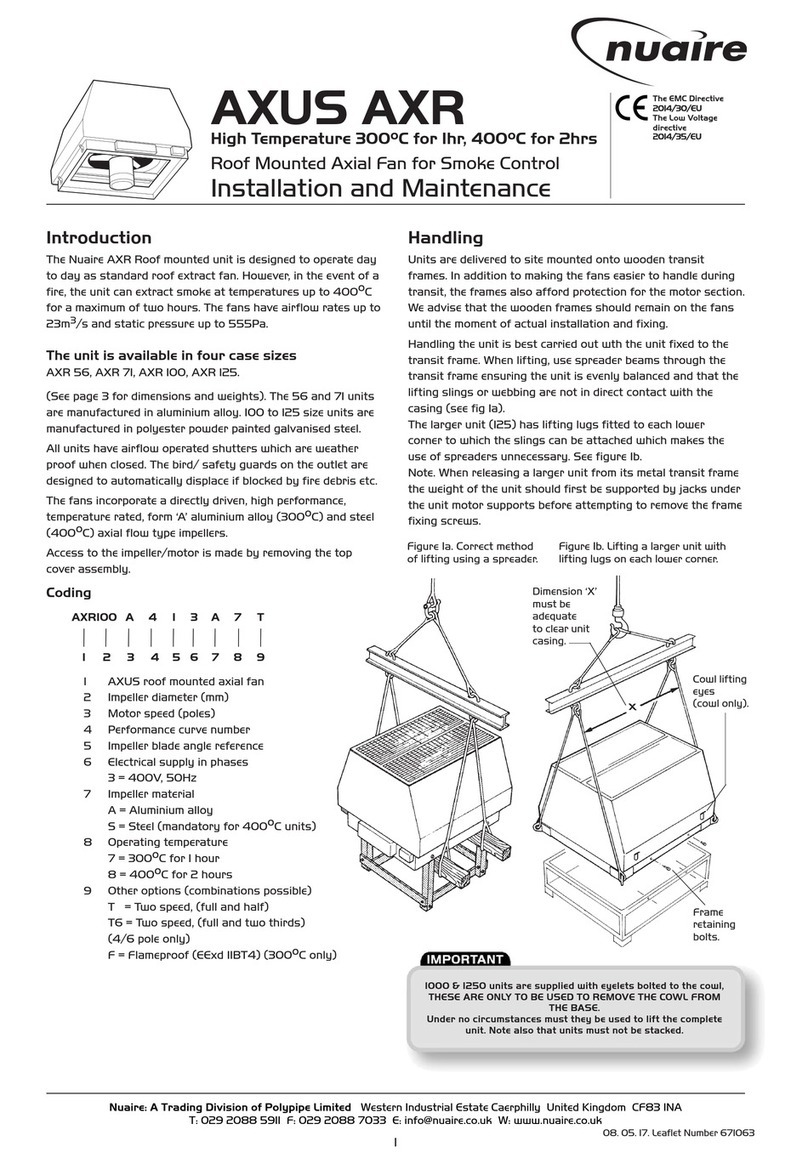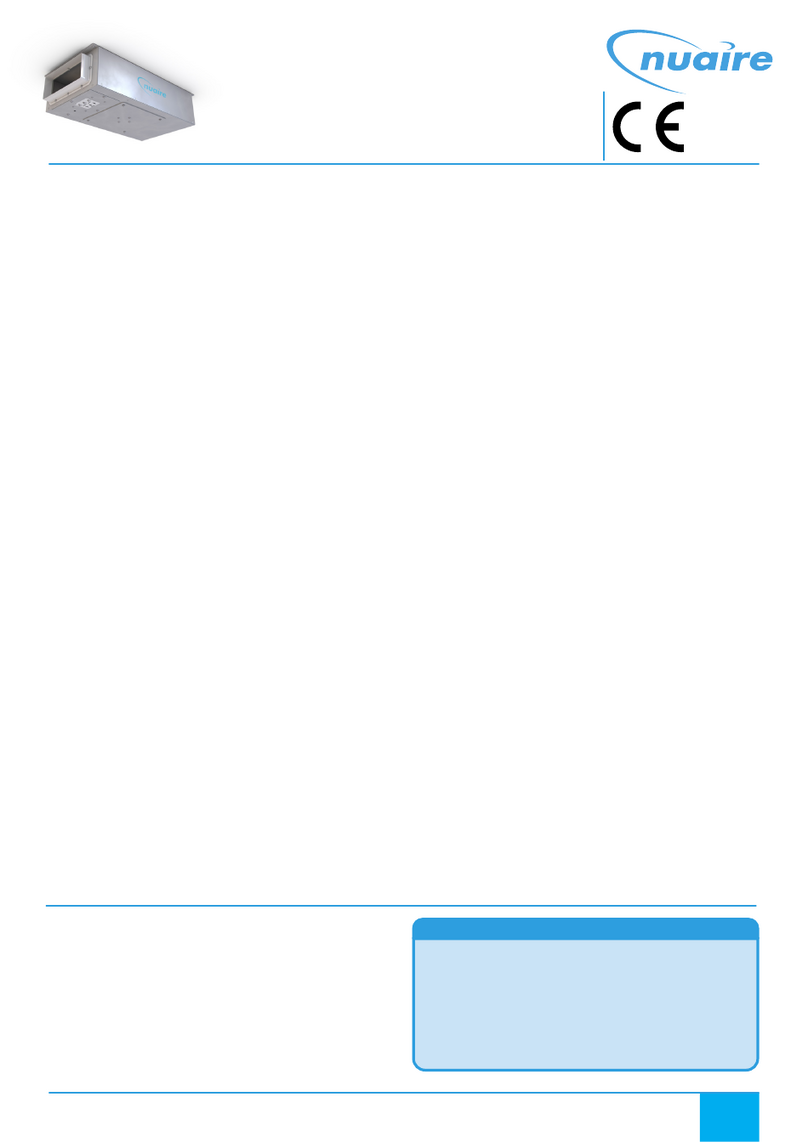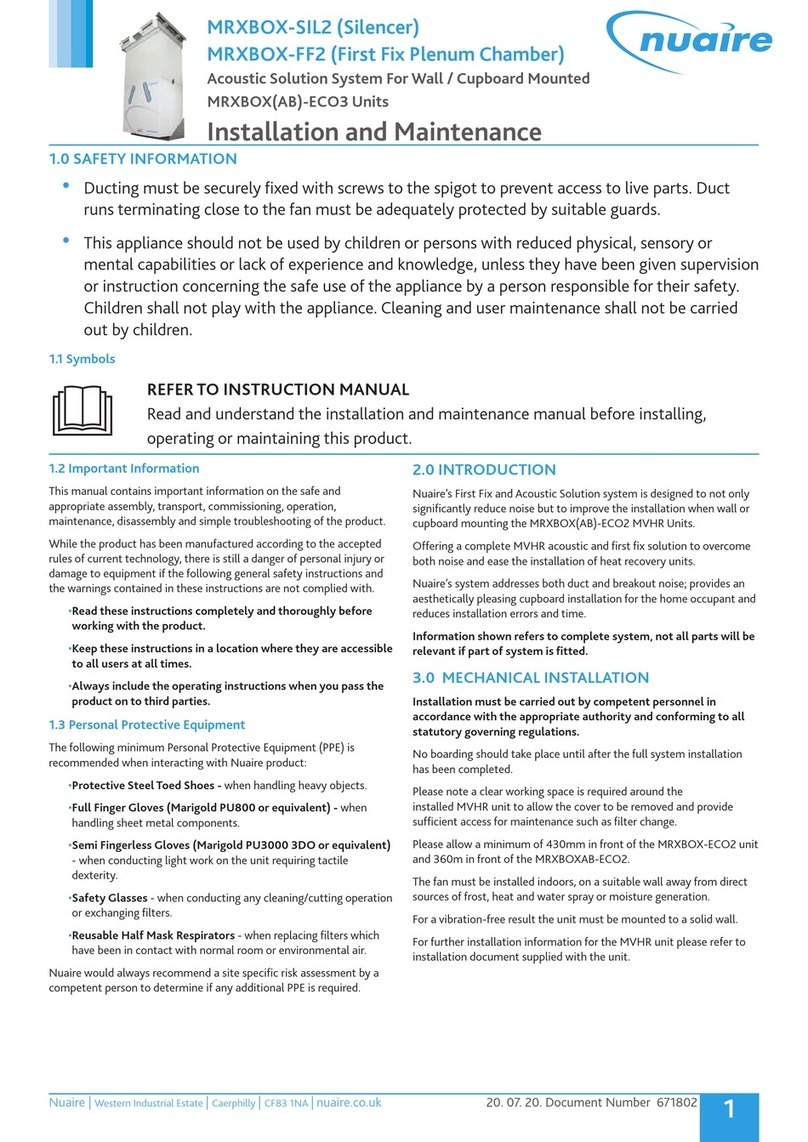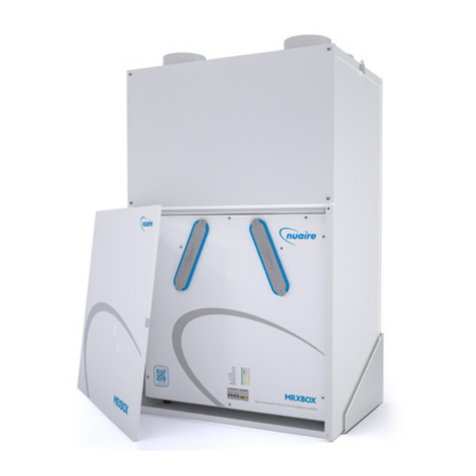9Leaflet Number 671423 October 2010
Installation, Operating and Maintenance Instructions XBOXER Thermal Wheel
Wiring (continued)
The system’s response to a 0-10V dc BMS signal
is given in the table below.
Note the BMS signal will override any sensors
and user control connected in the system. The
voltage tolerance is +/_ 125mV and is measured
at the fan’s terminal.
Ventilation mode Cooling mode* Heating mode*
Local control 0.00 - -
OFF / trickle 0.25 - -
Speed 1 0.50 0.75 1.00
Speed 2 1.50 1.75 2.00
Speed 3 2.50 2.75 3.00
Speed 4 3.50 3.75 4.00
Speed 5 4.50 4.75 5.00
Speed 6 5.50 5.75 6.00
Speed 7 6.50 6.75 7.00
Speed 8 7.50 7.75 8.00
Speed 9 8.50 8.75 9.00
Speed 10 9.50 9.75 10.00
* Only available on relevant unit.
5.0 Commissioning & Setting to work
(Note – not all of the components listed here are necessarily
included with the equipment supplied).
5.1 Dampers (shut-off, isolation and
face/bypass)
Check the free action of the damper blades before powered
operation (the actuator has a gear release button).
Check that the actuator operates freely and over the correct range.
5.2 Mixing Boxes
Mixing box dampers should be checked as in 4.1 and should be
adjusted / set up to give the required airflows through each leg.
5.3 Filters
Remove filter access panels (observe and note airflow direction
labels), inspect filters for contamination with construction debris,
replace as necessary. Replace access panels.
Filter pressure drops will depend on actual flow rate and condition.
Observe and record filter pressure drops after performance
commissioning.
Typically, filter “dirty” condition occurs when the initial filter
“clean” readings have been increased by 125Pa.
If filter manometers, pressure switches or indicators have been
fitted, they should be set or adjusted to reflect the commissioned
system operation.
5.4 Heating & Cooling Coils
Water
Water coils should be connected to ensure that full counter flow
exists i.e. - the entering airflow meets the return connection.
All water coils should be connected with the flow at the bottom
and the return at the top unless otherwise advised.
Drain and bleed valves are located on the coil, others may be
required in the system pipe-work depending on the installation.
Frost protection must be incorporated on shut down and fresh air
conditions to avoid coil freezing. The Ecosmart control system if
fitted, includes temperature sensing and frost protection
strategies.
Ideally, where the system is at risk of frost damage, the addition
of a proprietary anti-freeze solution to the water is recommended.
Where Ecosmart heating / cooling controls are provided, the coil
is pre-fitted with a 3 / 4 port valve and actuator housed in the
casing extension.
Pipe-work connections should be made to the unit using appropriate
techniques, and must be independently supported. The connections
should be pressure tested.
DX
Direct expansion coils must be fitted with a correctly sized
thermostatic expansion valve with an external equalising connection.
The expansion valve phial must be fitted between the suction
header connection and the equalising line. The recommendations
of the TE valve manufacturer should be referred to when locating
the phial and adjusting the superheat. In all cases, settings should
be in accordance with the recommendations of the manufacturer
of the refrigeration equipment.
All cooling coil drains must be connected to the sloping drain with
a correctly sized trap running to an open tundish or similar.
Note: ES-TC must be used in conjunction with DX.
5.5 Electric Heaters
Remove control access panel to permit site wiring to the Ecosmart
heating controller, or directly to the heating elements.
Elements have threaded connection points for linking elements
and site wiring. Elements should be linked with reference to the
appropriate wiring diagram, and the maximum available element
power combination may be decreased if required. Always maintain
a balanced load on three phase systems.
Cable entry must be made through the apertures provided.
Screwed glands with cable restraint devices should be used.
PVC or similar cables must not be used inside the heater unit –
due to the temperatures that may be experienced.
Units with Ecosmart electric heating controls incorporate a fan
run-on facility and overheat / fan failure protection.
In non-Ecosmart units, heaters are fitted with an over-heat cut-out
that must be wired into the control system.
It is strongly recommended that an airflow switch is incorporated
within the control system with a fan run on timer (15 minutes) and
an interlock provided between the heater contactor and fan motor
starter – to allow elements to cool on shutdown.
Nuaire will accept no liability for damage caused by an inadequate
control system.
All heaters must be wired in accordance with IEE regulations and
conform to local and national statutory requirements. The element
tray is a mains carrying component and must be earthed.
5.6 Fan Sections
Access to the fan section is via lift off panels. Cable entry must be
made through the apertures provided. Screwed glands with cable
restraint devices should be used.
For units with Ecosmart controls, the fan motors and failure
protection devices are pre-wired to the control assembly.
For non-Ecosmart units, wiring to the fan motor / unit terminal
box should be mechanically protected and in made in accordance
with the details on the motor name plate and diagram attached to
the unit.
For star delta starting, all links should be removed from the motor
terminal box and the motor wired as per the instructions supplied
with starter.
With the unit electrically isolated, rotate the fan impeller / drive
manually, checking that it spins freely. Check all fixings are
secure.
Units must not be operated without all access panels in place –
damage to equipment or injury to personnel may result.
Units must not be operated unless control interlocks are in place –
damage to equipment may result. Test run motor for condition and
correct rotation.
Check that the correct current overloads are fitted and that the
current being drawn does not exceed the motor nameplate value.
Excessive current normally indicates that the ductwork system
resistance is different to design.
Figure 21.

